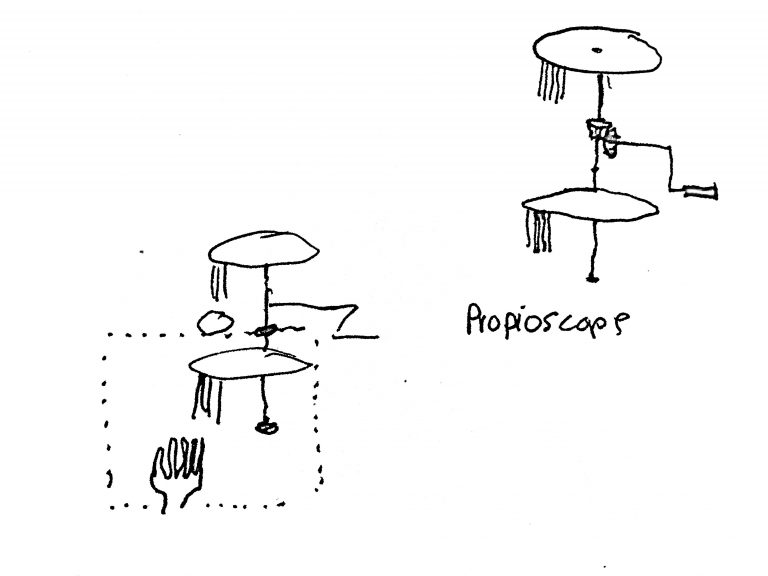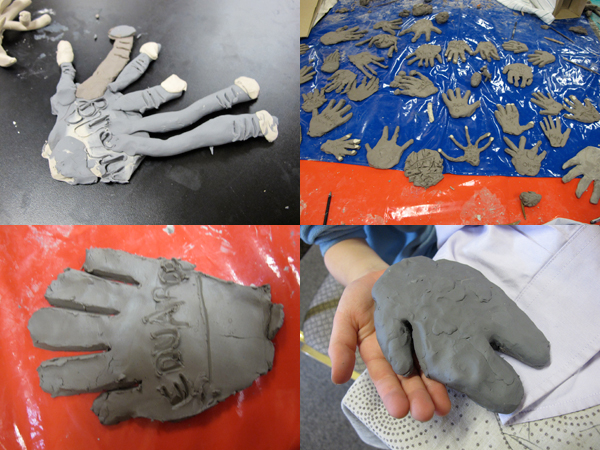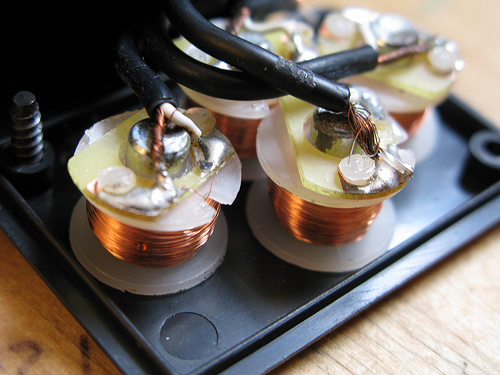“ What do new immersive technologies, such as augmented reality, virtual reality and artificial intelligence, offer storytellers and makers? And do they change the stories we choose to tell audiences? Two internationally renowned digital storytellers and makers present their latest creative projects and help us to find answers to these questions.” Notes from 'Making Immersive Experiences 1: Lance Weiler, Storytelling Lab, Columbia University + Chris Mullany, Marshmallow Laser Feast' Organised by Immersion Research Group, Manchester Metropolitan University Immersive storytelling is not something I have really ever thought about in relation to my work, however, I find the ideas discussed resonated strongly with my own practice and collaborations I have been part of. While listening to the speakers I realised I have taken part in
Notes and writing
Writing, creative writings, reflections and thoughts from conferences and meetings and discussions.
Drawing the unfeasible objects
I chose to draw each clay object created for the unfeasible objects experiments. Why? The photographs don't seem to do justice to the significance of the object, its purpose and the process its undergone. Both with my self and the participant. They say drawing itself is a form of embodiment. "In the gesture of a drawing, there abides the question of how human beings hold memory. A trace of the body, the projection of an emotion, a record of the experience of seeing are woven into the gestured mark, a kinetically vitalized inscription that can serve as a site of empathy and invitation as much as a line of mimetic description" Marking Time, Figuring Space: Gesture and the Embodied Moment. Sara Schneckloth The
Fish-brain-machine / Radiona workshop
After constructing the Fish-brain-machine PCB circuits we spent some time experimenting and describing the hallucinogenic visuals created by the stroboscopic light. The ping pong balls over the eyes diffuse the LED light, making for a more intense effect - and enabling use with eyes open. Here they describe some of the effects including seeing colours and 'a strange experience' of seeing with only one eye - I get this exact same feeling when using it. It is also hard to know if your eyes are open or closed. [See also Re-mapping the senses workshop ] https://www.youtube.com/watch?v=Lwne5xICLkI
Spontaneous sensations
Possibly one of the simplest experiments possible to conduct, requiring no special equipment. Simply stare at your hand for 5 mins. The experiment is described in the paper “the tickly homunculus and the origins of spontaneous sensations arising on the hands" in which you focus on your hand while staring at it (convergent focusing) or divergent focusing (staring at red marker next to the hand you are focussing on) for just 10 seconds and report the sensations. Here are the outcomes superimposed from 8 participants. In this experiment, many of the bemused participants described a tingling where the hand made contact with the table. They were bemused because I did this experiment in the context of our methods and methodologies discussion group - where I was
Strange face illusion with two-way Mirror feedback
“… a quiet room dimly lit by a 25 W incandescent light. The lamp was placed on the floor behind the observer so that it was not visible either directly or in the mirror. A relatively large mirror (0.5 m60.5 m) was placed about 0.4 m in front of the observer. The luminance of the reflected face image within the mirror was about 0.2 cd mÿ2 and this level allowed detailed perception of fine face traits but attenuated colour perception…The task of the observer was to gaze at his/her reflected face within the mirror. Usually, after less than a minute, the observer began to perceive the strange-face illusion…” Giovanni B Caputo, Perception, 2010, volume 39, pages 1007 – 1008 2010
Mechanically Augmented Reality
When I first learned about the Rubber hand illusion [RHI] I immediately began to think about ways in which the process could be automated to create an artwork, in which the experimenter's presence was removed. This could be done using sensors and a microcontroller to articulate solenoids to tap fingers for example. That thought train was on a back burner until discovered the work of fellow MMU PGR Lin Charlston. As part of her PhD research [See her profile here 'The Multimodal book as organism, artefact and assemblage: non-human agency in processes of growing and making'] She invented a beautifully simple, entirely mechanical device just to do exactly this. Your hand is placed inside a box, while the other hand turns a crank. On top of the box, another rubber hand
On the embodiment of unfeasible objects
Further to my last post detailing experiments relating to the embodiment of invisible and even third hands, here are some notes on my first 'Clay hand Illusion' experiments... The ‘Rubber hand illusion’ shows it is possible to convince participants that a rubber hand is their own by placing it in front of them while stroking it in the same way as their hidden real hand. The use of self-made clay hands, or objects [see below] in place of the rubber hand raises several interesting possibilities for exploration, which move away from the embodiment of replica body parts, and towards the possible embodiment of modified body parts, or completely 'unfeasible' objects.The clay allows for the gradual and immediate morphing of forms and for the
Drawing a strange face in the dark
Shortly after my experience of the "Strange face in the mirror experiment" I made these drawings in low light conditions as a way of recording the perceivable elements of my face and shape of the head. The particles of carbon and graphite reflect well the visual noise, like static, one experiences in the experiment. These drawings don't illustrate the hallucinations I experienced [these will follow] "staring at one's own reflection in a mirror in a darkened room for some time can induce vivid hallucinations. For purposes of research, I had to try it" My experience of the ‘strange face illusion’... For my description of my experience of the 'strange face', illusion see here... "staring at one's own reflection in a mirror in a darkened room for
Mixing object actions and context
This research looked at how we respond to the observation of actions and how the context affects our neural processing of that action. I was fascinated to learn simply by observing an action with an object that can be potentially used for an action - such as a potato peeler - the brain seems to simulate this action. But what happens when we observe an object being used for an action in an unusual context? Or what happens if we see an object being used for an unusual action, perhaps even in an unusual space. The experiments used videos of a person performing a task with specific objects in specific contexts such as cracking and egg into a bowl in the kitchen. and was then repeated in
Enki Manchester Science Museum
Some of the early experiments for the Enki project at Museum of Science and Technology Manchester 2007... We recorded brainwave data and monitored the behaviour of the electric fish during the experiment. The electrical activity of the fish is experienced as sound and light via ENKI (a stroboscopic high frequency led placed close to eyelid) and the natural binaural frequencies produced by the interaction and communication between Black Ghost Knife fish. The participant's bio-electric field was connected to the aquarium allowing the fish to sense a human (bio)electric image or presence. Museum of Science and Industry Manchester, 7th October 2006
Miniature rubber hand experiment
I bought this miniature rubber hand from the welcome trust shop and tried a quick experiment with my 8-year-old son on the train home. I was amazed it seemed to work almost instantaneously. I wonder if it's his extremely tactile nature makes him susceptible to the illusion? In relating to my ideas around experimenting with a clay hand in place of the traditional rubber hand, I went to see the 'Votive offerings' display. The objects are of Roman origin and are made from terracotta, It is believed that there were created in order to cure elements ranging from badness to more serious decreases relating to the body part [intestines, sexual organs, limbs, hair]. these were them thought to have been thrown into
Clay hand experiment #1
Working again with Lizzi Lewis of BEAM Lab and Manchester Science Museum we developed a workshop based on the 'Rubber Hand Experiment'. As we had to work with a large number of people and we didn't have funding to get loads of rubber hands. So we made the hands in the workshop with clay and used gloves full of different materials, sand, gel, lentils, etc. This had some interesting outcomes, that warranted further research... As you can see the hands were diverse in form, for the illusion to be effective the hand does not need to be true to life necessarily. Some hands were made purposefully alien for experiments and seemed to work effectively. I wondered if participants are more likely
The Sensorium of Animals
Electroreception in Experimental and Historical Media and Design Research. I was pleased to be invited to take part in this project along with an interesting selection of artists working with sound animals and the invisible world of signals as well as a cognitive neuroscientist and an expert in electric fish... "This research project explores the possibilities of technology-mediated systems to alter the human sensory apparatus from artistic-experimental and media historical angles. One part of this research focuses on possibilities of expanding the human sensory system beyond its biological limits, taking inspiration from sensorial abilities found in certain animals. Artistic-experimental systems, for instance in the field of wearable technology, will be tried out, researched and made available. The other part of this research
DIY Neuro stimulation
Reposted from my other blog 2009... I think the discussion around Michael Persinger's God helmet experiment was really interesting. I had to act on this and investigate the realm of experimental psychology further. I got in touch with him to ask some questions about the technology and the experimental process. I asked if I could make an array electromagnetic coils with oscillating magnetic field could generate similar effects. Which he seemed to think was feasible. I decided to make a modified version of the god helmet to work with my Enki interface. Here is a view my DIY neuro-stimulation device there are 4 coils which oscillate with magnetic frequencies, I have been using MAX MSP to drive these using electrical pulses derived from the
Amplitude Modulation Workshop
I met Martin Howse in 2009 when he invited me to do a workshop for his micro research series in Berlin. At the time he had a fantastic apartment with a large garage space for a studio. The large table at its centre became sprawled with electronics by the end of the day. I had the opportunity to take a look at some of his projects, wonderful hand-drawn circuits burnt and encrusted that looked more like remnants from some other device of unknown function. For this workshop we investigated Amplitude Modulation, turning light into sound, use of the LM chips as an amplifier and using light sensors as an input, and making LEDs and lasers transmit sounds and signals through light




